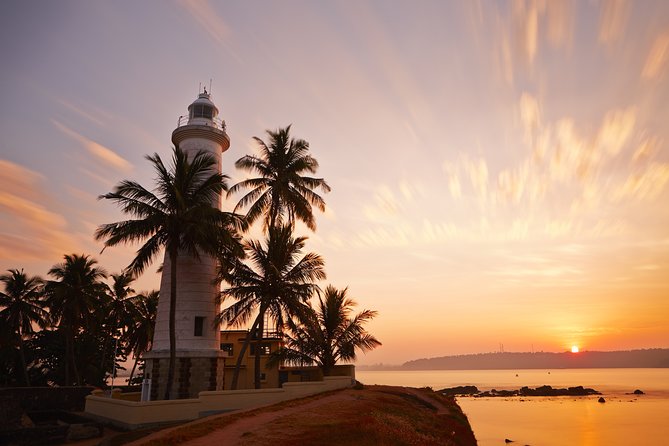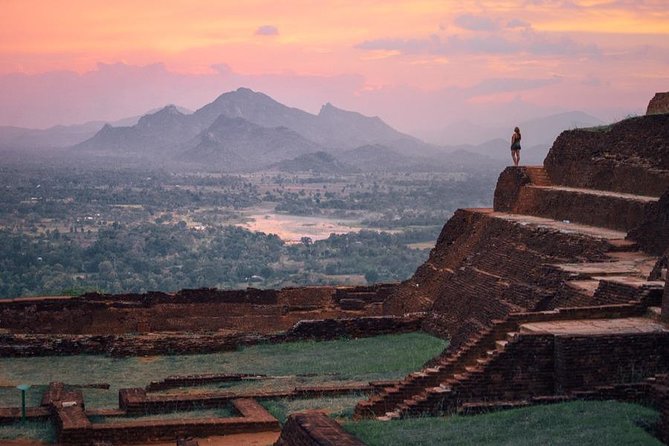Negombo Trip Overview
Explore the ruins of the ancient city of Polonnaruwa with hotel pick up and drop off for Negombo. Your journey with your private tour group and English-speaking driver begins at Gal Vihara, a 12th-century Buddhist temple made out of solid stone. See another beautiful image house (considered the largest one in ancient Sri Lanka) when you visit Lankathilaka Viharaya which was built by Parakramabahu I, king of Polonnaruwa between 1153-86. Visit the Vatadage – a well-preserved monument also known as the Circular Relic House – before admiring the ruins of King Parakramabahu’s Royal palace and his statue. The palace once had over 1,000 rooms and 7 stories. Learn about Parakrama Samudraya, a portion of the ancient city’s water reservoir, before returning to your hotel in Negombo.
Additional Info
Duration: 12 to 13 hours
Starts: Negombo, Sri Lanka
Trip Category: Cultural & Theme Tours >> Cultural Tours
Explore Negombo Promoted Experiences
What to Expect When Visiting Negombo, Western Province, Sri Lanka
Explore the ruins of the ancient city of Polonnaruwa with hotel pick up and drop off for Negombo. Your journey with your private tour group and English-speaking driver begins at Gal Vihara, a 12th-century Buddhist temple made out of solid stone. See another beautiful image house (considered the largest one in ancient Sri Lanka) when you visit Lankathilaka Viharaya which was built by Parakramabahu I, king of Polonnaruwa between 1153-86. Visit the Vatadage – a well-preserved monument also known as the Circular Relic House – before admiring the ruins of King Parakramabahu’s Royal palace and his statue. The palace once had over 1,000 rooms and 7 stories. Learn about Parakrama Samudraya, a portion of the ancient city’s water reservoir, before returning to your hotel in Negombo.
Itinerary
This is a typical itinerary for this product
Stop At: Gal Vihara, 440/225 Palm Grove State Minuwangoda road, Polonnaruwa 51000 Sri Lanka
The Gal Vihara, also known as Gal Viharaya and originally as the Uttararama, is a rock temple of the Buddha situated in the ancient city of Polonnaruwa in North Central Province, Sri Lanka. It was fashioned in the 12th century by Parakramabahu I. The central feature of the temple is four rock relief statues of the Buddha, which have been carved into the face of a large granite rock. The images consist of a large seated figure, another smaller seated figure inside an artificial cavern, a standing figure and a reclining figure. These are considered to be some of the best examples of ancient Sinhalese sculpting and carving arts, and have made the Gal Vihara the most visited monument at Polonnaruwa. The images of Uttararama follow a different style from the images of the previous Anuradhapura period, and show some significant differences. The identity of the standing image is subject to a certain amount of dispute among historians and archaeologists, some of whom argue that it depicts the monk Ananda rather than the Buddha.
Duration: 30 minutes
Stop At: Samudra Parakrama, Polonnaruwa Sri Lanka
Parakrama Samudra is a shallow reservoir, consisting of five separate reservoirs connected by narrow channels in Polonnaruwa, Sri Lanka. The northernmost reservoir is the oldest and referred to as Topa wewa built around 386 AD. The middle section Eramudu wewa and the southernmost portion, at the highest elevation, is Dumbutula wewa, both sections were added and the reservoir expanded during the reign of King Parâkramabâhu I.
Duration: 30 minutes
Stop At: Polonnaruwa Vatadage, Sacred City, Polonnaruwa Sri Lanka
The Polonnaruwa Vatadage is an ancient structure dating back to the Kingdom of Polonnaruwa of Sri Lanka. It is believed to have been built during the reign of Parakramabahu I to hold the Relic of the tooth of the Buddha or during the reign of Nissanka Malla of Polonnaruwa to hold the alms bowl used by the Buddha. Both these venerated relics would have given the structure a great significance and importance at the time. Located within the ancient city of Polonnaruwa, it is the best preserved example of a vatadage in the country, and has been described as the “ultimate development” of this type of architecture. Abandoned for several centuries, excavation work at the Polonnaruwa Vatadage began in 1903. Built for the protection of a small stupa, the structure has two stone platforms decorated with elaborate stone carvings. The lower platform is entered through a single entrance facing the north, while the second platform can be accessed through four doorways facing the four cardinal points. The upper platform, surrounded by a brick wall, contains the stupa. Four Buddha statues are seated around it, each facing one of the entrances.
Duration: 30 minutes
Stop At: Rankoth Vehera, Ancient Bhikku Hospital, Polonnaruwa 51000 Sri Lanka
Rankoth ( Rankot) Vehera (Goldern Pinnacle) Stupa, is the 4th largest stupa in the country after Ruwanveli Seya, Jetawanarama and Abhayagiriya in Anuradhapura. Built by King Nissanka Malla (1187-1196), it is 55 meters in height 185 meters in circumference. This is the largest Stupa in Polonnaruwa.
Duration: 30 minutes
Stop At: The Palace of King Parakramabahu, Polonnaruwa, Sri Lanka
Sri Lanka is a great country to entertain your holidays so far. Thus there are a number of tourist attractions in Polonnaruwa which was once a great Royal capital of ancient Sri Lanka. It is said that this magnificent building was a seven storied building with thousand chambers. The palace was built by King Parakramabhu I during the 11th century.
You will find the giant wall over a meter thick going about 30 feet and the bottom half of the main stairway which led to upper floors. Inner walls seemed to be faded and melted brick walls caused by intense heat. The place was completely set on fire by the South Indian Invader ‘magha’. It is believed that the upper floors were made from wood and comprised with beautiful stone carvings. The reign of King Parakramanbhu was the glories chapter of the Sri Lankan history. Because of the country was nourished with his great service done to the irrigation system. Not only that but also shrines, sacred places and infrastructure added to the city are still remarkable. Remains of 55 rooms and three stories can be found on the premises and it is true that this would be a grandeur structure that our nation ever had. The small accommodations outside the palace may be service rooms attached to the main palace. Further, they may be used by ministers, soldiers or servants who served to the King. The palace was guarded and bordered by a steep moat. Water was supplied by an inter locking pottery pipe system. However, the entire city where the Palace is erected was the 2nd royal capital of Sri Lanka. King parakramabhu also had a Royal court house in front of this place. The plastered walls of the palace are still intact.
Duration: 30 minutes
Stop At: Lankathilaka Image House, Polonnaruwa Sri Lanka
Lankathila Viharaya is a Gedige type large image house build by king Parakramabahu the Great ( 1153- 1186 AD). The specialty in this structure is the two pylons at the entrance and the giant Buddha statue in side. This statue is 42 feet in height and building walls are 53 feet high. The structure was done with bricks and there were two floors. You can see the remaining of stares, which ware used to climb the upper floor. According to the historical reports and pictures in early 20th century by Mr. H.C.P Bell, the head the Buddha statue was there at that time, but you can’t see it now. You can see some evidence that there were some paintings in the interior. Lankathilaka Viharaya went on some renovation process during the Dabadeniya(13th century) kingdom time by king Vijaya Bahu the fourth (1270-1272 AD).
Duration: 30 minutes






